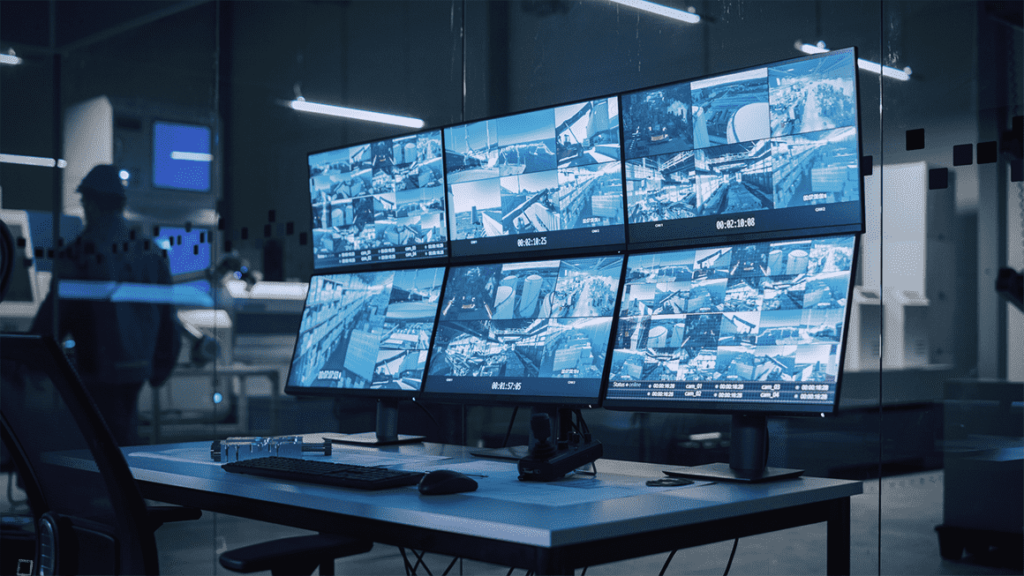Understanding the differences between proactive vs. reactive video monitoring solutions is essential when protecting your property and assets. These two approaches serve distinct purposes and offer different levels of security.
This article will delve into the critical aspects of proactive and reactive video monitoring, helping you decide which best suits your security requirements.
ValleyGuard Video Monitoring: Learn More About Our Video Monitoring Solutions
Proactive Video Monitoring: Preventing Incidents Before They Occur
Proactive video monitoring is all about staying one step ahead of potential threats. It involves real-time surveillance and immediate action to deter criminal activities. Here’s how it works:
- Real-time Threat Detection: Proactive systems use advanced video analytics to spot potential threats as they unfold. This threat could be an unauthorized person approaching your property or any suspicious activity.
- Immediate Alerting: The system sends instant alerts to security personnel or a monitoring center once a threat is detected. This rapid response ensures that action is taken swiftly.
- Live Intervention: Highly trained personnel can intervene in real time. They may issue warnings through speakers, activate alarms, or even contact local authorities to prevent the crime from happening.
Related Post: What is Remote Guarding and How Does It Work?
Benefits of Proactive Video Monitoring
- Preventative Measures: Proactive systems can deter criminals before they commit a crime, making them highly effective.
- Reduced Risk: With real-time intervention, the risks of property damage and losses are significantly minimized.
- Quick Response: Authorities are alerted promptly, ensuring a faster response time in emergencies.
- Cost-effective: Proactive systems can reduce the need for on-site security personnel, saving you money in the long run.
- Peace of Mind: Knowing your property is actively monitored 24/7 provides a sense of security.
Related Post: Virtual Guard Monitoring FAQs
Reactive Video Monitoring: Responding After the Fact
Reactive video monitoring, on the other hand, responds to incidents after they’ve occurred. Here’s how this approach works:
- Recording Incidents: Reactive systems primarily focus on recording events. They capture footage that can be reviewed later for evidence.
- Human Review: Human operators analyze the recorded footage and identify security threats or criminal activities.
- Delayed Response: While reactive systems are valuable for investigations, they don’t prevent crimes in progress. Response times may vary depending on when the footage is reviewed.
Related Post: Remote Video Monitoring for Construction
Limitations of Reactive Video Monitoring
- Post-Incident: Reactive systems cannot prevent crimes; they can only provide evidence after the fact.
- Time Delay: The time it takes to review recorded footage can result in delayed responses to security threats.
- Limited Deterrence: Criminals may not be deterred by the presence of cameras alone, as they know their actions won’t be stopped in real time.
Related Post: Remote Video Monitoring for Film & TV Production
Making a Choice: Proactive vs. Reactive Video Monitoring Solutions
Choosing between proactive and reactive video monitoring depends on your specific security needs. Here are some factors to consider:
- Property Type: Proactive monitoring is ideal for high-security locations where preventing incidents is crucial, while reactive monitoring may suffice for less critical areas.
- Budget: Proactive systems generally require more investment but can save costs on security personnel in the long term.
- Risk Tolerance: Assess your risk tolerance; if you can’t afford to wait for a response, proactive monitoring may be the better choice.
- Integration: Consider how these systems integrate with your existing security infrastructure.
Related: Remote Video Monitoring for Summer Retail Security
Wrapping Up
In conclusion, proactive and reactive video monitoring solutions each have their merits and are suited to different security scenarios. Understanding their differences and assessing your specific needs is the key to making an informed decision.
Whether you opt for proactive prevention or reactive response, prioritizing security is always a wise choice.
If you need further guidance on selecting the right video monitoring solution for your property or have questions about installation, feel free to reach out to us.

